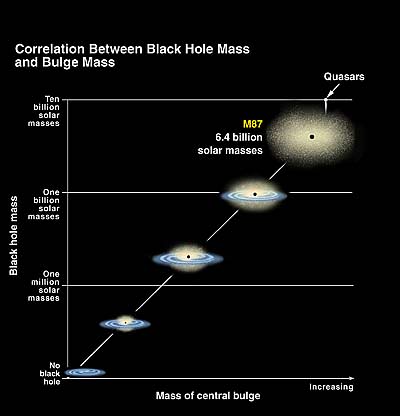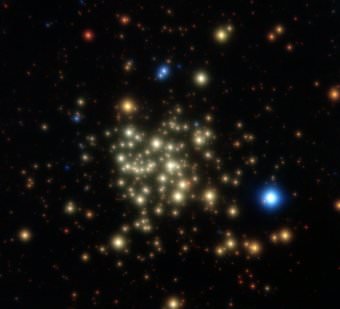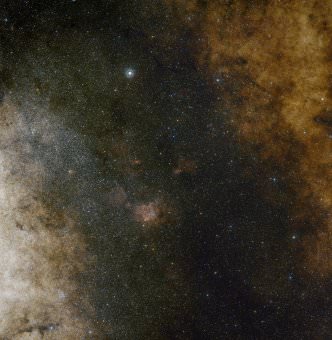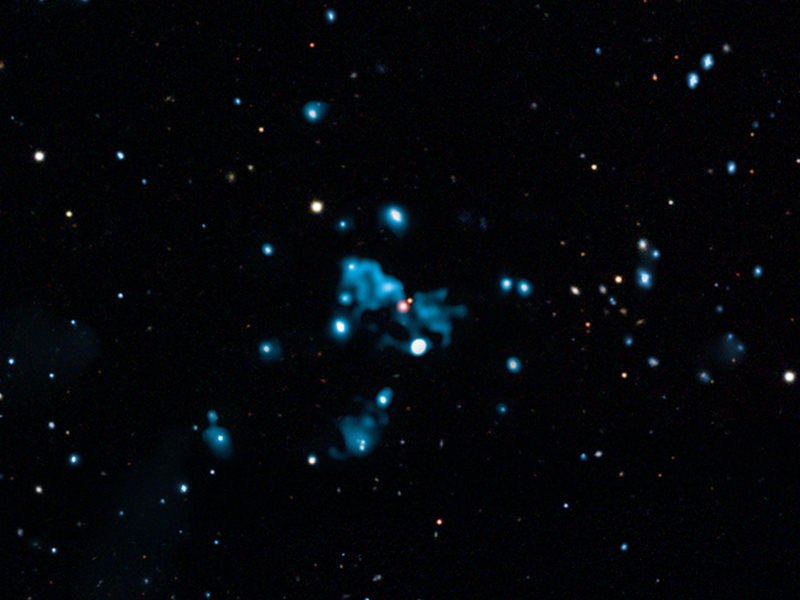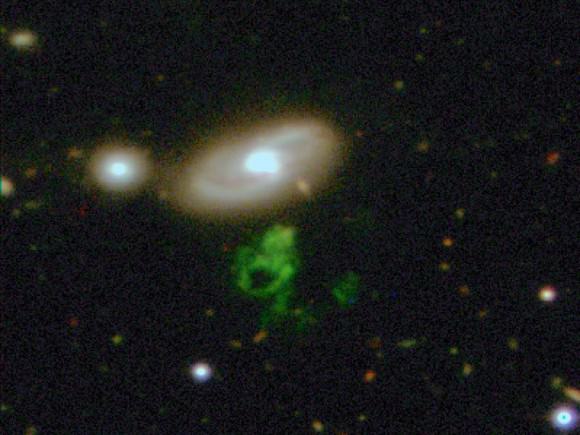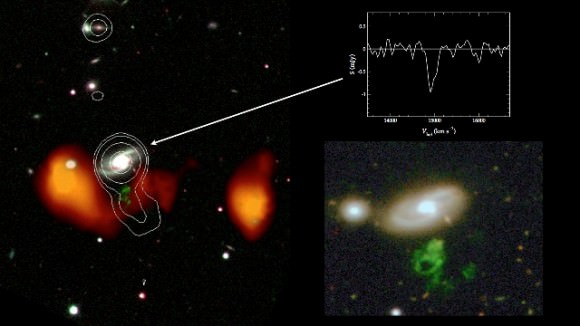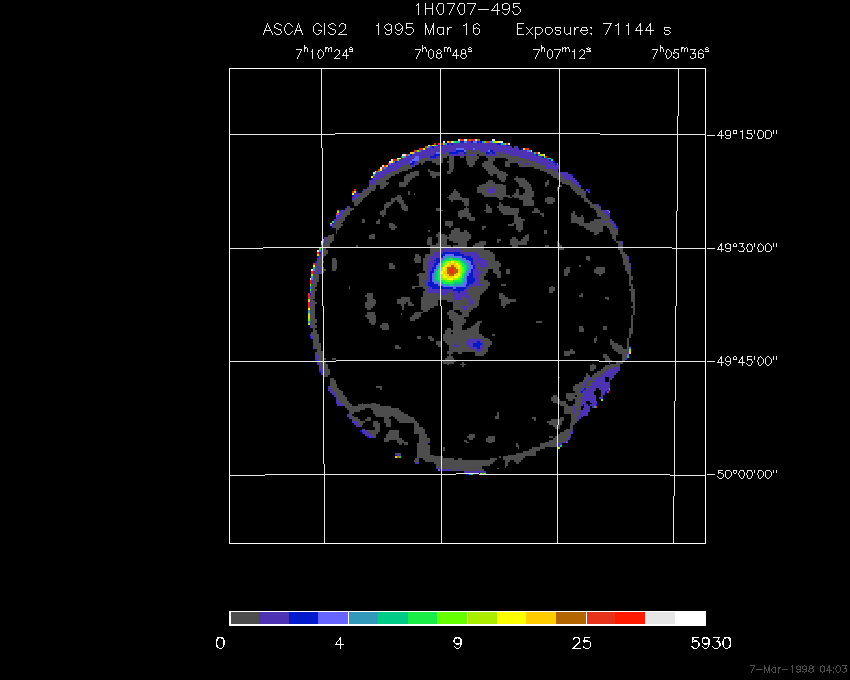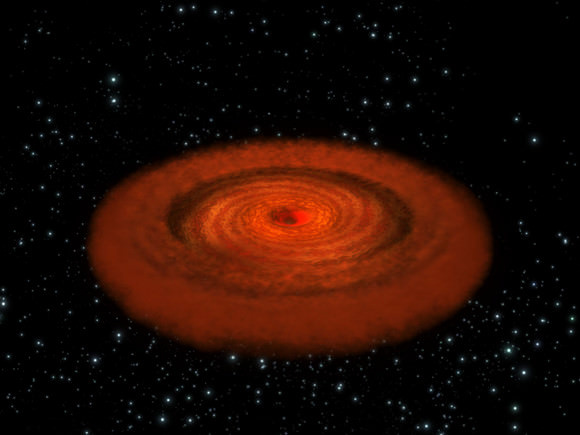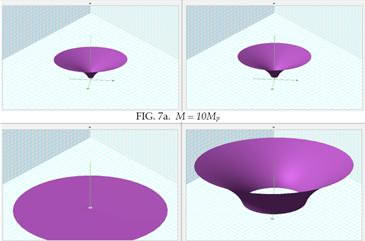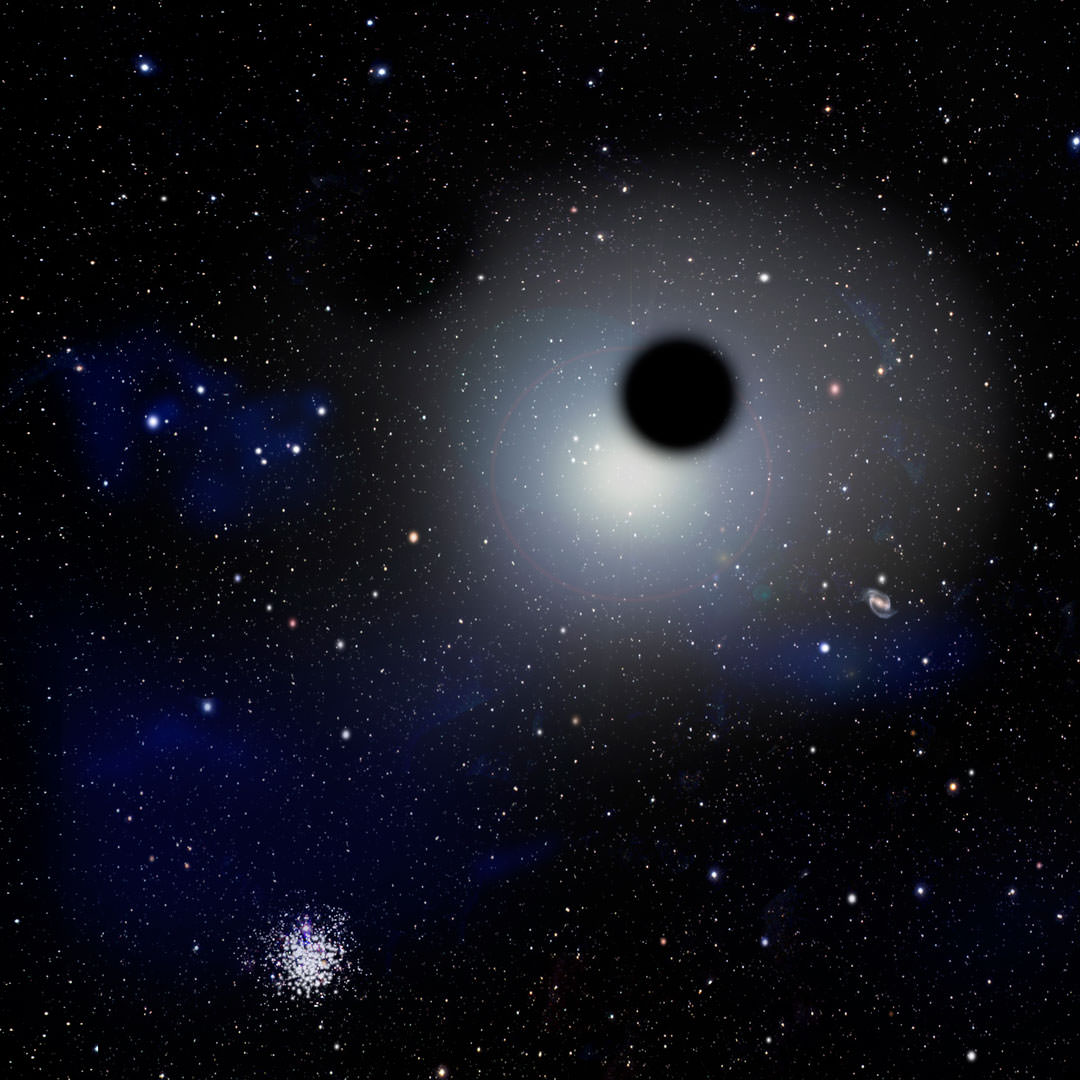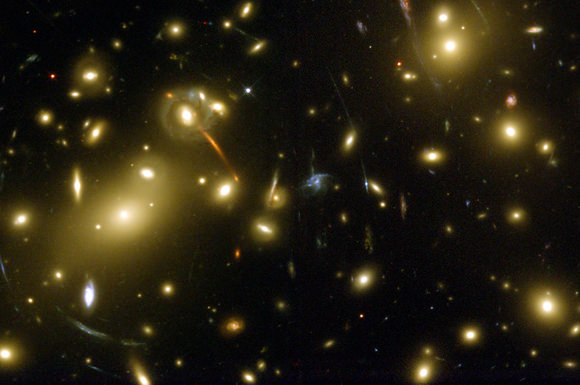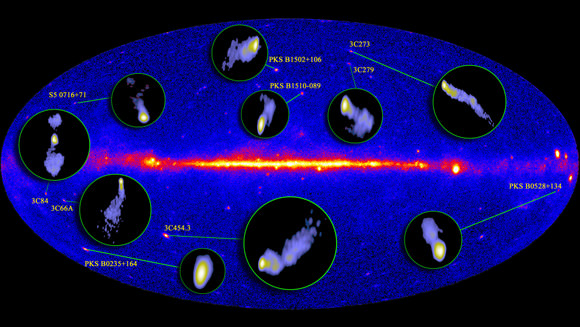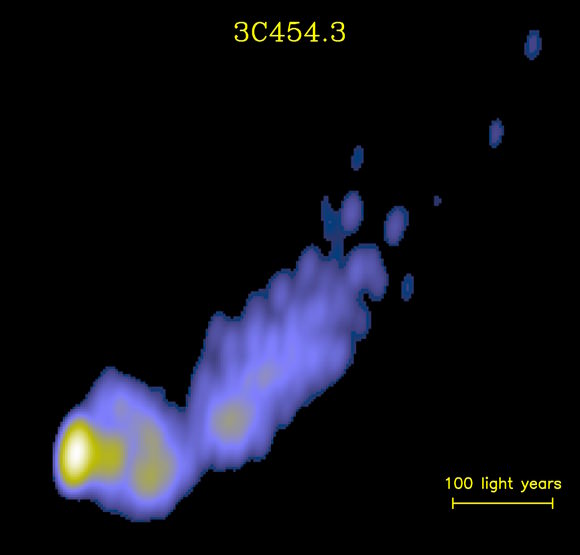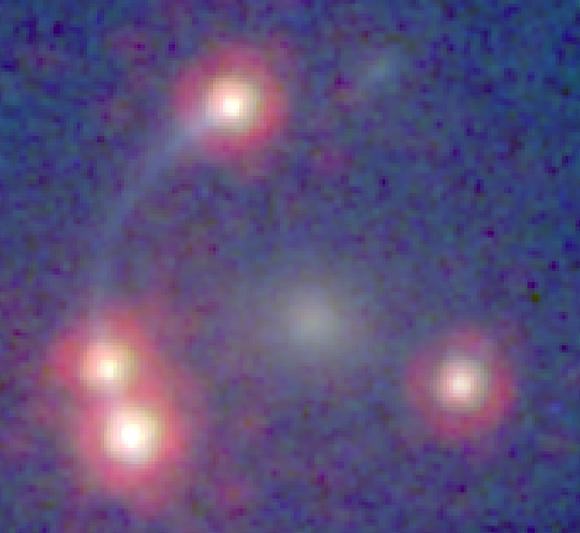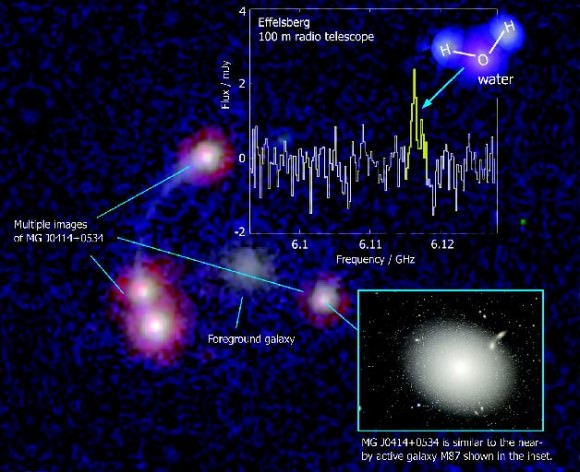[/caption]
Astronomers say they’ve discovered the “coming of age” of galaxies and black holes, thanks to new data from NASA’s Chandra X-ray Observatory and other telescopes. The new discovery helps resolve the true nature of gigantic blobs of gas observed around very young galaxies, and sheds light on the formation of galaxies and black holes.
The findings, led by Jim Geach of Durham University in the UK, will appear in the July 10 issue of The Astrophysical Journal.
About a decade ago, astronomers discovered immense reservoirs of hydrogen gas — which they named “blobs” – while conducting surveys of young distant galaxies. The blobs are glowing brightly in optical light, but the source of immense energy required to power this glow and the nature of these objects were unclear.
Based on the new data and theoretical arguments, Geach and his colleagues show that heating of gas by growing supermassive black holes and bursts of star formation, rather than cooling of gas, most likely powers the blobs. The implication is that blobs represent a stage when the galaxies and black holes are just starting to switch off their rapid growth because of these heating processes. This is a crucial stage of the evolution of galaxies and black holes – known as “feedback” – and one that astronomers have long been trying to understand.
“We’re seeing signs that the galaxies and black holes inside these blobs are coming of age and are now pushing back on the infalling gas to prevent further growth,” said coauthor Bret Lehmer, also of Durham. “Massive galaxies must go through a stage like this or they would form too many stars and so end up ridiculously large by the present day.”
Chandra and a collection of other telescopes including Spitzer have observed 29 blobs in one large field in the sky dubbed “SSA22.” These blobs, which are several hundred thousand light years across, are seen when the Universe is only about two billion years old, or roughly 15 percent of its current age.
In five of these blobs, the Chandra data revealed the telltale signature of growing supermassive black holes – a point-like source with luminous X-ray emission. These giant black holes are thought to reside at the centers of most galaxies today, including our own. Another three of the blobs in this field show possible evidence for such black holes. Based on further observations, including Spitzer data, the research team was able to determine that several of these galaxies are also dominated by remarkable levels of star formation.
The radiation and powerful outflows from these black holes and bursts of star formation are, according to calculations, powerful enough to light up the hydrogen gas in the blobs they inhabit. In the cases where the signatures of these black holes were not detected, the blobs are generally fainter. The authors show that black holes bright enough to power these blobs would be too dim to be detected given the length of the Chandra observations.
Besides explaining the power source of the blobs, these results help explain their future. Under the heating scenario, the gas in the blobs will not cool down to form stars but will add to the hot gas found between galaxies. SSA22 itself could evolve into a massive galaxy cluster.
“In the beginning the blobs would have fed their galaxies, but what we see now are more like leftovers,” said Geach. “This means we’ll have to look even further back in time to catch galaxies and black holes in the act of forming from blobs.”
Sources/more information: the Chandra sites at Harvard and NASA.


